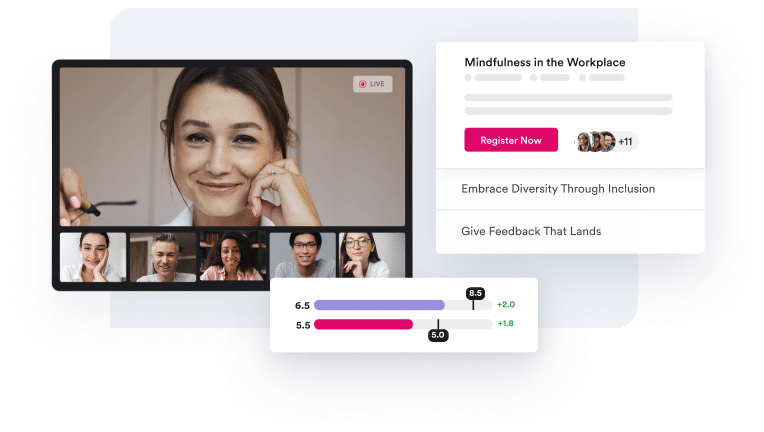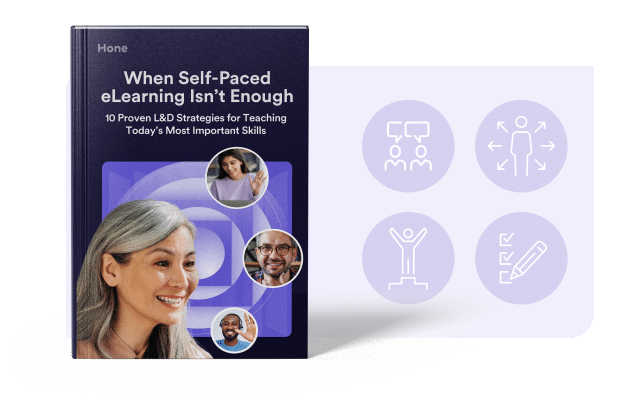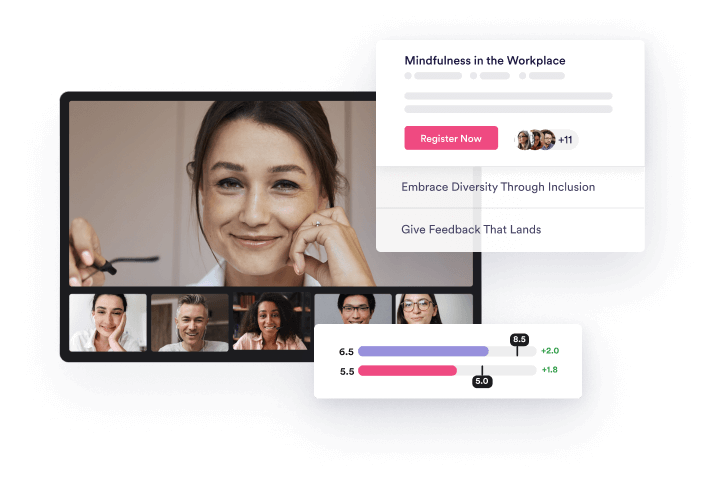In the ever-evolving landscape of Learning and Development (L&D), leaders are continually confronted with the challenge of balancing effectiveness, customization, and scalability. Traditionally, they’ve navigated through two primary approaches — the first being scalable content libraries that boast a vast array of asynchronous resources. While seemingly catering to diverse learning needs, these libraries often fall short in terms of engagement, knowledge retention, and driving tangible behavioral change among employees.
On the other end of the spectrum, there’s the option of crafting bespoke content delivered by in-house teams. This approach is known for its effectiveness and high level of customization, tailoring training programs to the specific needs of the organization. However, it comes at a cost — it’s resource-intensive and notoriously challenging to scale.
These traditional options often leave a gap in achieving the desired impact, with L&D teams finding themselves scrambling to meet internal demands. This phenomenon is what we refer to as the “missing middle” — the critical need for scalable and effective learning solutions that not only engage employees but also create a substantial and lasting impact on organizational development.
To address this gap and ensure real organizational growth, L&D leaders are tasked with the imperative of creating engaging professional development opportunities that foster improvement and change on a large scale, reaching every level of leadership. In this article, we delve into the limitations of in-house training, exploring how it contributes to the missing middle and the crucial considerations for a more effective L&D strategy.
3 major limitations of solely relying on in-house training
1. Direct costs and considerations
The financial burden of in-house training can be substantial. In-house training involves expenses for curriculum development, instructional materials, technology infrastructure, and possibly hiring dedicated trainers. Additionally, there are indirect costs associated with the time involved planning and organizing training sessions, creating or sourcing relevant content, and coordinating schedules to ensure minimal disruption to daily operations.
L&D leaders also invest time in assessing training needs, monitoring participant progress, and evaluating the effectiveness of the training programs. Balancing these costs effectively is crucial for optimizing the return on investment in employee development and ensuring that in-house training aligns with organizational goals.
2. Scope of content
Think of your training program like a buffet, but when relying solely on in-house training, you risk providing a limited selection that might not meet everyone’s needs. Your employees could miss out on vital skills and knowledge simply because they weren’t part of the offering.
Employees at various levels, departments, and roles possess distinct skill sets, experiences, and learning styles. Recognizing and accommodating this diversity is essential for fostering an inclusive learning environment. For instance, entry-level employees might benefit from foundational training to establish a strong knowledge base, while mid-level managers may require leadership and strategic skills development. Tailoring training programs to these specific needs ensures that each employee receives relevant and meaningful learning experiences.
The role of L&D involves understanding the dynamic needs of different audiences and creating customized learning paths. By doing so, L&D professionals can help bridge skill gaps and equip employees with the tools they need to excel in their roles. This targeted approach not only enhances individual performance but also contributes to the overall success of the organization.
3. Learner engagement and impact concerns
Traditional in-house programs often struggle with keeping employees engaged. The “one-size-fits-all” approach doesn’t account for diverse learning preferences. Moreover, the impact of in-house training can be hit or miss. Some employees may find it challenging to apply what they’ve learned in real-world situations.
One primary issue is the lack of practical application opportunities, as training may emphasize theoretical knowledge without offering chances for hands-on experience. Additionally, limited interactivity in training modules can result in a passive learning experience, which hinders employees’ ability to engage with and retain information. The absence of sufficient feedback mechanisms further compounds the problem, leaving employees uncertain about the correctness of their application attempts.
Mismatch between the content of in-house training and the actual job requirements is another common hurdle. If the training does not closely align with the demands of employees’ roles, the transition from theory to practical implementation becomes challenging. Cognitive overload, often caused by information overwhelm during training, can impede retention and application. Furthermore, the lack of post-training support, including resources, mentors, or communities for ongoing guidance, contributes to the struggle employees face in applying newly acquired knowledge. Resistance to change and a preference for familiar methods also play a role, highlighting the importance of fostering a culture that embraces continuous improvement. To address these challenges, a holistic approach is necessary, incorporating practical application opportunities, interactive learning methods, ongoing support, and alignment with job requirements in in-house training programs.
HONE TIP:
One of the things we do in our classes to help turn engagement into action is at the end of every class, we have people make a commitment. It’s based on the idea of triggered action planning — where you set a goal, then define a situation in which you will take a particular action — and these sorts of very specific implementation intentions are more likely to result in application.
To address these challenges and maximize your training efforts, here’s a great webinar on how to build a strategy around learner engagement and maximizing impact with live learning.
The complementary role of live, on-demand, and collaborative learning
So, we’ve covered in-house training limitations. But how do we break free from the limitations of in-house training and create a scalable and effective model for corporate learning? By diversifying your approach.
Instant feedback and interactivity
Imagine attending a training session where you can ask questions in real time and get immediate answers. That’s the beauty of live, interactive training sessions. They foster a dynamic learning environment where knowledge flows freely, and questions are welcome. It’s like having a personal tutor on standby – no more struggling in silence.
Diverse content offerings
Enter on-demand learning platforms. Think of these platforms as the Netflix of corporate training. They offer a vast library of courses and resources that employees can access whenever and wherever they want. It’s like having a personal library of knowledge at your fingertips, ensuring that you never run out of books to read—the dream!
Boosting engagement through collective learning
Collaborative learning is the secret sauce for boosting engagement. Imagine employees sharing their experiences, insights, and best practices with one another. It’s like a brainstorming session on steroids — a hive of collective wisdom. This not only enhances understanding but also fosters a sense of community within your organization.
How to add live learning on-demand to your L&D strategy
In-house training is undoubtedly valuable, but to thrive in the dynamic world of business, you need a multifaceted approach that combines live, on-demand, collaborative, and democratized learning. This approach offers real-time feedback, a diverse range of learning opportunities, and a thriving learning and development community.
Hone Membership is a revolutionary approach to online learning that offers much more than your typical virtual classroom because it offers live power skills learning, on-demand. Learning leaders can create and assign powerful professional development programs for every audience, all within one affordable subscription. Learners get around-the-clock access to the world’s largest library of live online classes where they’ll learn from renowned coaches alongside other professionals of diverse backgrounds.
Want to learn more about how to continuously upskill your team with live, collaborative learning with Hone Membership?








